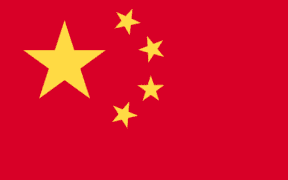5% WELCOME BONUS SITEWIDE
MY CART
Sword Types Index
Types of Chinese Swords
Discover our extensive index of Chinese swords, sortable by period, type, and use. In general, Chinese swords are categorized into two main types: dao (curved sabers) and jian (straight swords), each reflecting the rich history and craftsmanship of these iconic weapons. Continuously updated with detailed information and new research, this index offers a deep dive into the art and tradition of Chinese sword-making.
UPDATED ON 08.07.2024
#
Name
Image
Region
Popularity
Jian

 China
China
Most Popular
HudieDao (Butterfly Sword)

 China
China
Most Popular
LiuyeDao

 China
China
Very Popular
DaDao

 China
China
Very Popular
MiaoDao

 China
China
Very Popular
Chinese Bronze Swords

 China
China
Commonly Recognized
Tai Chi Sword

 China
China
Commonly Recognized
Hook Sword

 China
China
Commonly Recognized
TangDao

 China
China
Commonly Recognized
YanmaoDao / Yanlingdao

 China
China
Commonly Recognized
SongDao

 China
China
Commonly Recognized
WoDao

 China
China
Commonly Recognized
ChangDao

 China
China
Commonly Recognized
ZhanmaDao

 China
China
Commonly Recognized
JiuhuanDao

 China
China
Commonly Recognized
NiuweiDao

 China
China
Commonly Recognized
GuanDao

 China
China
Commonly Recognized
Sai Sword

 China
China
Commonly Recognized
Longquan Sword

 China
China
Occasionally Mentioned
Shuangshou Jian

 China
China
Occasionally Mentioned
Han Jian

 China
China
Occasionally Mentioned
Han Dao

 China
China
Occasionally Mentioned
Sui Dao

 China
China
Occasionally Mentioned
NanDao

 China
China
Occasionally Mentioned
Sword Breaker

 China
China
Occasionally Mentioned
DanDao

 China
China
Occasionally Mentioned
WoyaoDao

 China
China
Occasionally Mentioned
Green Dragon Crescent Blade

 China
China
Occasionally Mentioned
Qi Ji Yao Dao

 China
China
Occasionally Mentioned
Sword of Goujian

 China
China
Occasionally Mentioned
Chinese Copper Swords

 China
China
Rarely Discussed
Zhibeidao

 China
China
Rarely Discussed
Duan Jian

 China
China
Rarely Discussed
Husa Dao

 China
China
Rarely Discussed
PoDao

 China
China
Rarely Discussed
PianDao

 China
China
Rarely Discussed
YanchiDao

 China
China
Rarely Discussed
Zhanma Jian

 China
China
Rarely Discussed
MoDao

 China
China
Rarely Discussed
DuanDao

 China
China
Rarely Discussed
YutouDao

 China
China
Rarely Discussed
Shuang Jian

 China
China
Rarely Discussed
Tuanlian Jian

 China
China
Rarely Discussed
Dao Chong

 China
China
Rarely Discussed
Qiang Chong

 China
China
Rarely Discussed
PeiDao / YaoDao

 China
China
Rarely Discussed
Chan Chi Dao

 China
China
Rarely Discussed
Zhidao

 China
China
Rarely Discussed
Gan Jiang & Mo Ye Sword

 China
China
Rarely Discussed
Bi-Metallic Ancient Swords

 China
China
West Asia
Rarely Discussed